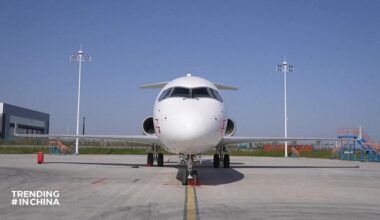There are certain risks associated with this quickly emerging technology, calling for drone insurance to hedge against the risk of a contingent or uncertain loss and address potential liability concerns.
Drones or unmanned aerial vehicles (UAVs) have become a worldwide phenomenon, with an unprecedented rise in technology and new solutions, variants, and business companies emerging daily. As technology continues to evolve, drones are revolutionizing the aviation sector by flying beyond the visual line of sight and ensuring site safety, security, and regulatory compliance more efficiently than ever before. These quadcopters are increasingly becoming popular due to their seemingly endless applications in the commercial, recreational, or military sectors.

Before jumping to drone insurance, let’s pay attention to the popularity and potential risks of flying drones.
Popularity of drones
With time, drones have become smaller, more affordable, more powerful, and more versatile. They have begun transforming various application areas, including the civilian, commercial, military, recreational, and aerospace industries. It is becoming a part of our everyday lives and an indispensable instrument for businesses of all sizes.
Once limited to science fiction or notions of the future, the arrival of drones made quadrotor helicopters and convertibles a reality. The practicality of drones is evident in several areas like photography, agriculture, filmmaking, law enforcement, architecture & construction, aerial surveillance, journalism, scientific research, etc.

There are millions of drones worldwide; more than 800,000 drones are registered in Federal Aviation Administration (FAA) alone. As drones grow in numbers and functions, commercial drone space will expand unprecedently.
Drone-risk factors
In the excitement of the growing applications of drones, it is often easy to overlook the rising complexity of these unmanned aircraft systems. Drones can be a source of nuisance, esp. when they fly recklessly over others’ property, invading their comfort and messing up their privacy. There are serious threats and challenges connected with the use (or, say, misuse) of drones, and it can lead to any of these: property damage, bodily injuries, financial damages, potential privacy violations, hull loss, etc. That’s when drone insurance comes to play.
Drone insurance: What is it, and why is it done?
Drone insurance is a financial protection offered to commercial and recreational operators to cover potential risks associated with these maneuverable aerial crafts, such as aviation liability, data protection, invasion of privacy, probable accidents and mishaps, etc. It takes a skilled person to fly or navigate a drone safely, but unfortunate circumstances can occur anytime. Purchasing drone insurance is a form of risk management that offers bespoke protection and peace of mind for drone operators in case something goes wrong. Drone insurance will protect owners from potential drone accidents and mishaps and provide coverage for bodily injury or property damage resulting from their operations.
If you, as a drone operator, deem the drone-related risks too large to carry, you can make a smart investment by letting insurance companies carry some of the risks. This way, you can lower your liability exposure and save your bacon in case of unfortunate events.
Also Read: Countering drones at the airport’s side in Nepal?
Risks faced by commercial drone operators
To better understand the type of insurance policies available, it is crucial to know about the risks that commercial drone operators can face:
1. Liability risks
Drone companies face the main risk of being held liable or responsible for property damage, bodily injuries, or several other damages, resulting in direct or indirect financial loss. A drone operator can knowingly or unknowingly damage someone else’s property or strike a person, causing bodily harm such as cuts and stabs, hearing problems, etc.
2. Hull loss
One can accidentally crash the drone when in flight, leaving it unrecoverable. The drone structure isn’t usually rigid, so the machine is prone to crashing and inflicts a lot of damage during a crash, making it deformed.
3. Cybercrime
Cybercriminals can embrace drone innovation to commit digital interruptions like taking over Wi-Fi or radio signals, posing serious challenges to commercial drone operators. The illicit control takeover of drones in flight can result in physical damage and loss of life due to collision with other aircraft or ground objects.
4. Privacy issues
There are many instances of drone misapplication in spilling people’s privacy, such as capturing their live feed, leaking their confidential information or photographs, etc. So, people can misjudge drones hovering over their houses for comfort and privacy invasion. While commercial drones are usually confined to protected areas, recreational users can fly drones over other’s property, too closer for their comfort, eliciting privacy lawsuits.

Types of drone insurance
Purchasing drone insurance is a worthy and smart investment decision for businesses that fly drones for commercial purposes. If you plan to get a commercial drone insurance policy, here are available options. These drone insurance policies have their coverage so that you can choose what insurance coverage is suitable for you and your business.
1. Drone liability insurance
Drone liability insurance is a form of financial protection that covers your expenses from unintended bodily injuries or property damage caused to third parties during drone operation. Drones usually fly at high velocity and can cause a wide spectrum of injuries, from minor cuts, eye lacerations, or skin lacerations to open fractures. The rotating blades/ propellers and edges can cause serious bodily harm when the drone is in motion.
Similarly, the careless operation of drones can cause damage to the infrastructure it is flying within. There is also the possibility of breaking windows, lights, and objects or slicing protective packaging and coverings. Furthermore, there is a fire risk due to the explosion of lipo batteries used in drones, which can’t be extinguished with water.
Drone liability insurance will protect operators from expensive liability claims when they unintentionally damage someone’s property or physically hurt them. It is better to pay for this insurance policy than for heavy property damage or physical injury lawsuits.
2. Hull insurance
Drones are composed of light materials and are susceptible to damage during collisions or heavy landings. They can break easily on impact and may become irreparable. Drone hull insurance covers damages to drones while being operated commercially and can provide repair or replacement options. Because drones are increasingly becoming affordable, you should consider the cost-effectiveness of this policy before opting for one. You might not necessarily need to buy a $10000 drone insurance policy for a drone that costs less than a thousand dollars.
3. Payload insurance
Suppose your drone is equipped with expensive accessories such as thermal cameras, professional cinematography cameras, or a gimbal system. In that case, you may consider purchasing payload insurance that offers coverage to protect the payload, which can cost thousands of dollars. While hull insurance protects against drone damage during their normal use or accidental damage with coverage amount equal to the market price of the repair service, payload insurance will carry your risk associated with damage that may incur to expensive pieces of equipment attached to your drone.
4. Cyber liability insurance
This insurance policy holds specific coverage against cyber-attacks on your drones or computer infrastructure, which could result in physical damage. Cyber liability insurance will waive your responsibility for damages such as civil damage, data breaches, physical damages, etc., and take care of fines you might be subjected to due to cyber-attacks that you had no control over.
5. Aviation product liability
Under general liability insurance, an aviation product liability subcategory will give you coverage against liability claims and costs associated with the risk of the defective product. While pilots and operators are primarily responsible for safe drone operation, the drone may also cause harm to persons or property due to manufacturing defects or its inability to perform reasonably safely from the start.

Drone insurance: Does the law require it?
Until now, the Federal Aviation Administration (FAA) hasn’t made it mandatory to get a drone insurance policy for recreational or commercial drone use in the US. Suppose you are a recreational drone operator and use it just for fun to capture aerial images or videos of sports games. In that case, buying $1 million liability insurance is not a sensible idea. However, drone insurance is a good fit for those conducting business and flying drones commercially.
In light of heavy privacy and security regulations in place and the evident likelihood of drone mishaps and accidents, it is always a safe and smart move to purchase drone insurance. Law doesn’t force you to get liability coverage, but it won’t let you go free if something wrong happens during drone operation. Drone insurance is one of the effective ways to mitigate and transfer various drone-related risks ranging from minor injury to expensive privacy lawsuits.
Based on hourly policy, drone liability insurance can cost as little as 7hrs/hour. If you seek a yearly policy, you can just pay between $500-$1000 annually for $1 million coverage and negotiate limited to as high as required by the business.






